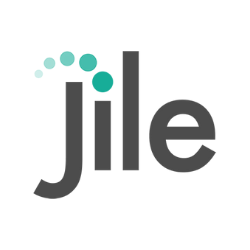PI Planning in Agile: Meaning, Importance, Steps & More

Program increment planning or PI planning is a critical component of the Agile Release Train (ART). This planning process ensures that everything goes as planned and in the right direction. Since ART is the central component of all collaborative teams, it is critical to always keep it on track.
This blog will provide you with a basic overview of PI planning, including its importance, steps, PI planning meaning, and more. We will also discuss SAFe PI planning, as well as the day-one agenda and day-two agenda of the PI event.
What is PI Planning in Agile?
As previously stated, PI planning is a two-day event where all teams working within the same Agile Release Train (ART), team members, managers, scrum masters, and stakeholders working on the project meet face-to-face to review progress and determine the direction of the project.
This is typically a two-day event held every 8-12 weeks. Each team member and manager has a specific role to play or tasks to complete prior to the event. For instance,
- Development teams will work on user story planning & estimation.
- Engineers and UX (User Experience) teams collaborate to validate the planning.
- Prior to the PI planning event, product managers will work on prioritizing the designed features
The ultimate goal is to align all teams and members around a common vision, discuss product features, discuss competition, plan the roadmap, and identify and resolve cross-team dependencies.
The Goal & Importance of PI Planning

PI planning– a critical component of the Scaled Agile Framework (SAFe)– is essential in developing stable teams and teams of teams. You should be aware that in large organizations, multiple teams/trains are working toward the same goal. For this reason, teams must gather and review every 8-12 weeks to determine whether they are progressing in the right direction.
This is where PI planning comes into play. For example, it assists development teams in dealing with the difficulties of coordinating multiple teams. It also assists them in streamlining and navigating processes to deliver a suitable product
In a nutshell, the goal of program increment planning or PI planning is to bring all the parties involved in project development together on the same platform every three months to iron out differences, identify inter-team dependencies, evaluate progress trajectory, and so on.
What is the Relation between SAFe and PI Planning?
As explained previously, PI planning is an important component of the SAFe (Scaled Agile Framework). In fact, it would not be an exaggeration to say that if PI planning is not conducted, SAFe is not accomplished. Meaning, in order to ensure that you are properly implementing SAFe, you must conduct PI planning on a regular basis
If you cannot meet in person, you can conduct virtual PI planning. This periodic exercise will allow Agile Release Train (ART) teams to synchronize, collaborate, and align towards the same goals.
Besides that, it is critical to adhere to the core Agile principle, especially as teams expand. However, as a team grows, implementing SAFe PI planning becomes more challenging. This is where PI planning will come in handy.
Steps of PI Planning
PI planning can be divided into two primary stages: preparation and agenda. To ensure the success of the PI planning, adequate preparation is required from the beginning and at each step. For example, each participant must contribute to the process.
The following are the key roles or key people who should be involved in the PI planning process:
- Release Train Engineers (RTEs)
- Product Owners
- Product Managers
- Scrum Masters
- Developers
A. PI Event Preparation
Each of the above roles is important to PI planning and has a specific role to play. These individuals will collaborate to ensure the preparedness for the following aspects:
- Organizational readiness: The necessary arrangements must be made well in advance so that each team and stakeholder involved in the PI planning can be present on time and as needed. Ideally, preparations at the organizational level should begin at least a month before the event.
- Content readiness: Everyone from the presenters to the stakeholders to the managers should be given the materials that explain the vision and purpose of the event. Managers are responsible for preparing this content and sharing it with team members on the first day of the PI planning event.
- Facility readiness: It is expected that the event will be held in a large room so that all teams can be present at the same time and communicate easily with one another. You should also make plans for the members who will be present virtually for the PI planning event. Each table can have at least one computer with virtual conference facilities.
B. PI Event Agenda
Now we arrive at the second stage of the PI planning process – the agenda. The Agile PI planning agenda can be divided into two parts: day one agenda and day two agenda. Let's take a quick look at each of these.
Day One Agenda:
On the first day of the PI planning agenda discussion, the following information is communicated to team members, or the following steps are taken:
- Higher management will share details about how the business is doing with the teams.
- Product managers will present their vision and ideas for the next program increment (PI).
- The IT department will present its plans for strengthening the IT infrastructure at the upcoming PI planning event.
- RTEs will share the PI program outline as well as their expectations from each team.
- Each team will present its draft plans to other teams and stakeholders to give feedback
- Management will hold meetings to discuss draft plans and resolve the issues raised.
Day Two Agenda:
On the second day of the PI planning agenda discussion, the following information is communicated to team members, or the following steps are taken:
- Management will provide updates on any decisions made in the previous day's problem-solving meeting..
- The teams will consider these updates, revise their objectives, and rehare them with management
- Each team will share their dependencies on the other team, as well as the risk factors and objectives.
- Each risk is discussed in order to determine how to overcome it. Based on the discussion, each issue is classified as Resolved, Assigned, Accepted, Mitigated, and so on.
- After discussing all the risks and objectives of each team, the team will vote on whether or not they believe they will be able to meet the objectives by the future PI planning event.
This is how Agile PI planning is carried out. At the end of the second day, release train engineers will hold a meeting to review the event and determine what went well and what needs to be improved for the next PI planning.
Conclusion
PI planning is a critical component of SAFe and must be done on a regular basis, i.e., every 8-12 weeks. This exercise will assist organizations and teams in reducing their reliance on other teams, mitigating risk factors, fine-tuning their approaches, and more. The event also allows the Agile Release Train and the organization to align on the same goals.
Thanks for subscribing to our latest blogs, thought leadership and other product updates!
Read our Privacy Notice to know more. You can opt-out of all communications anytime.
